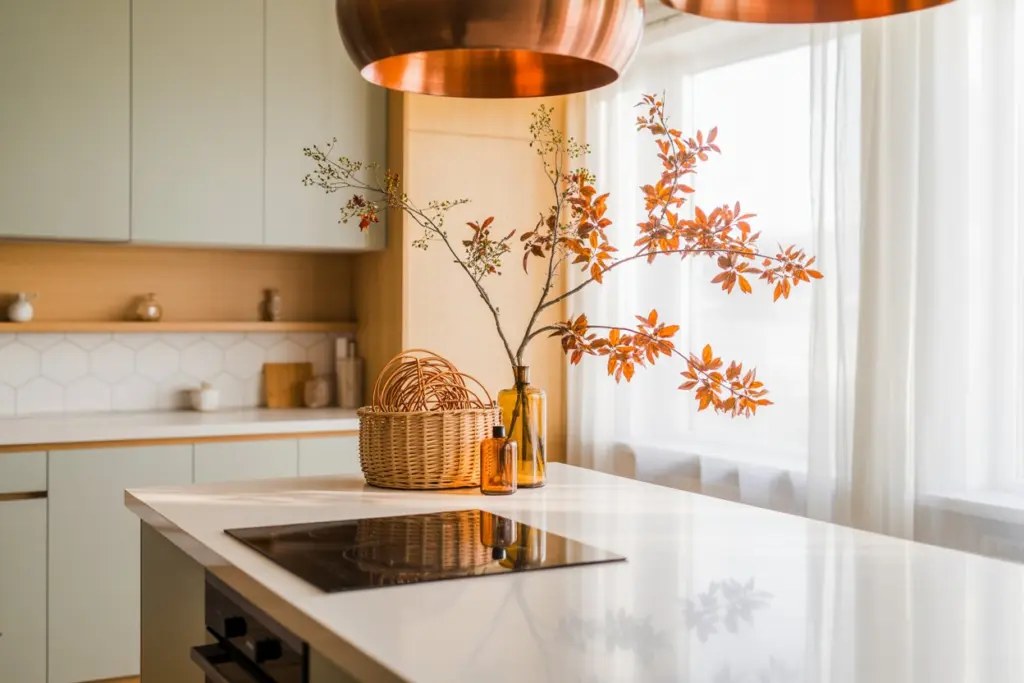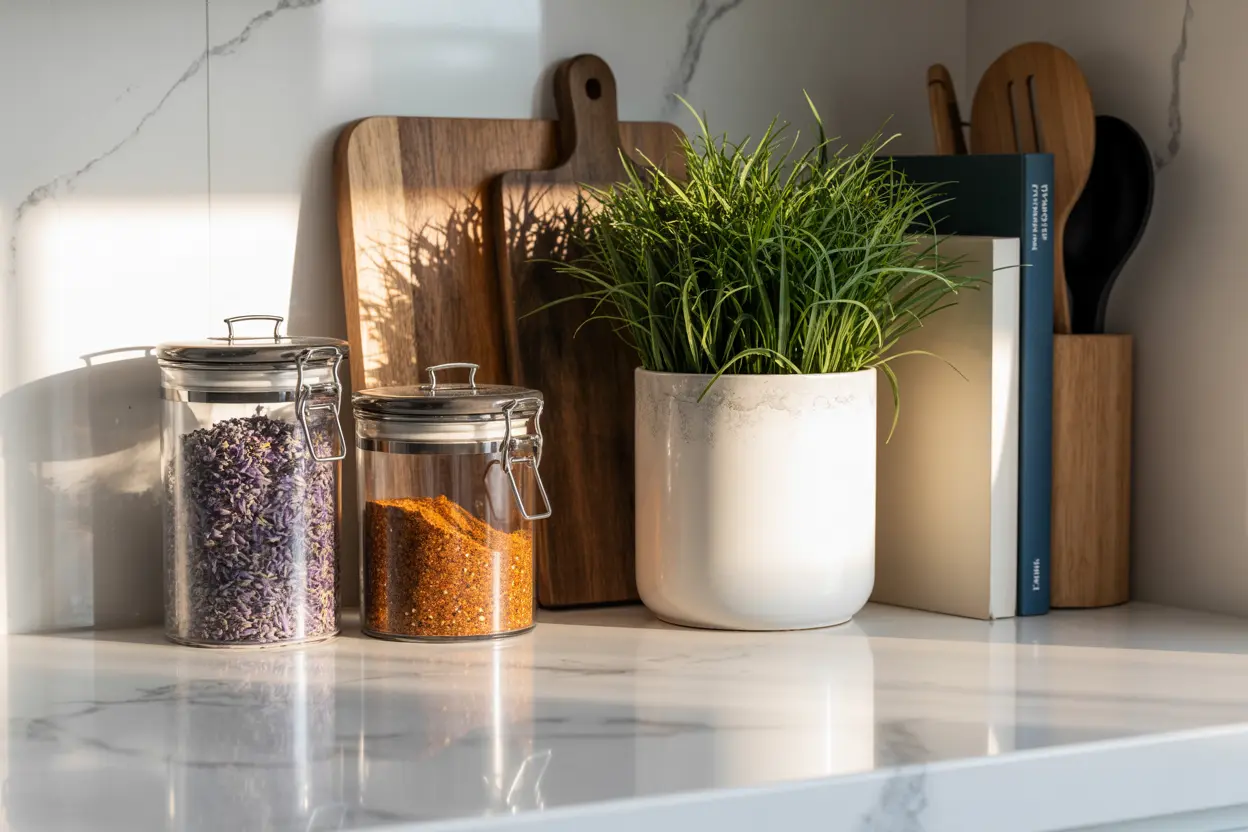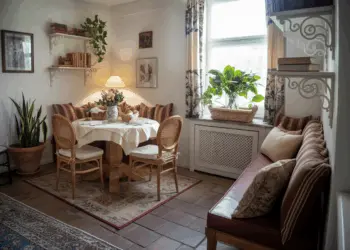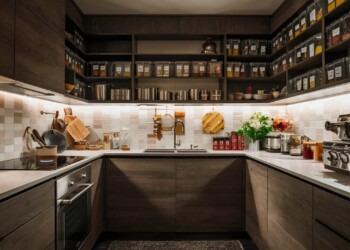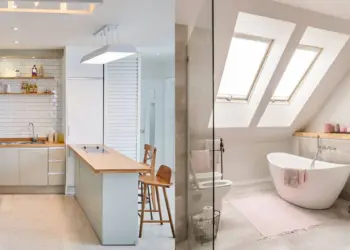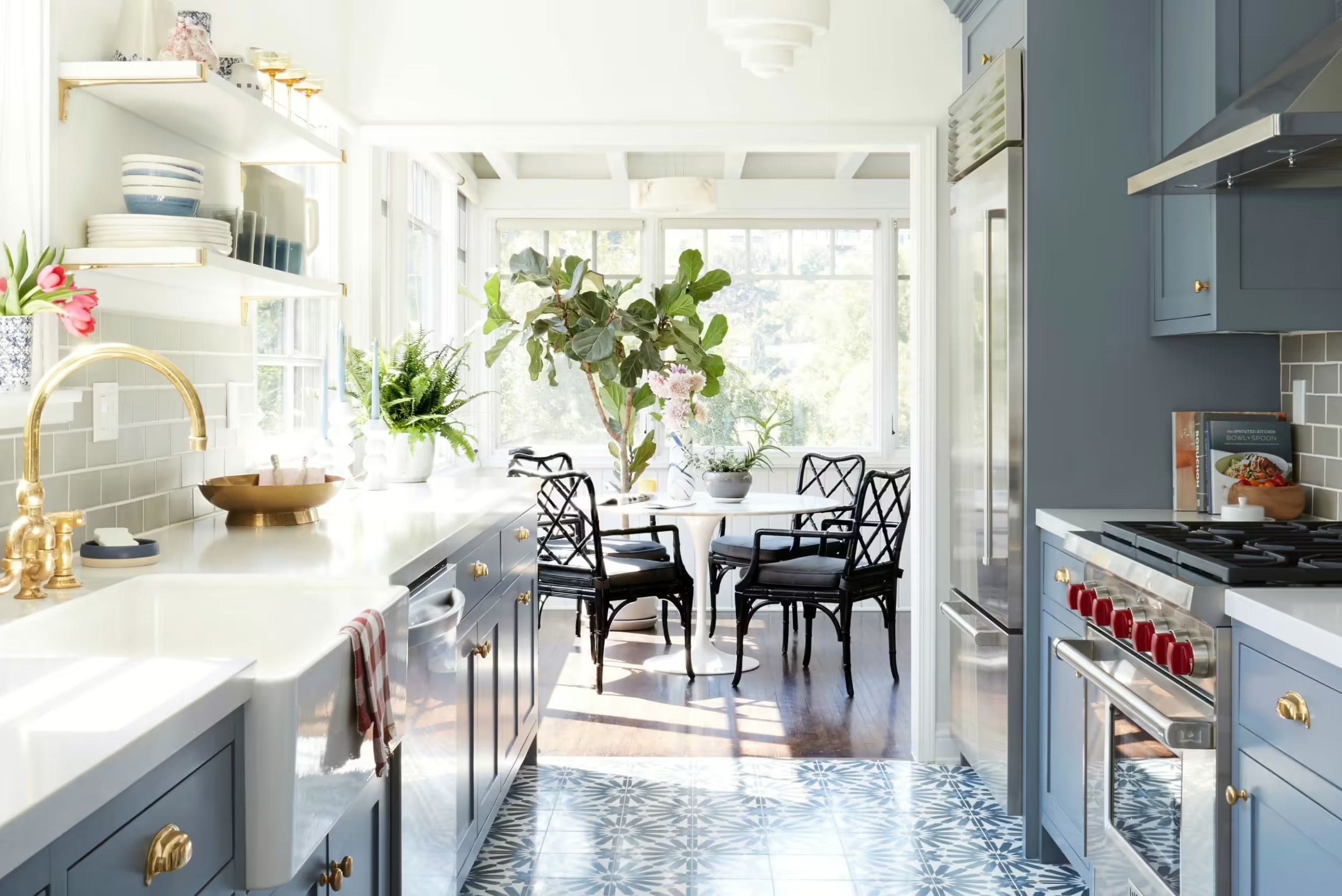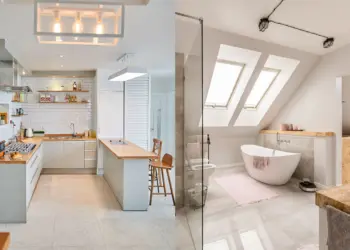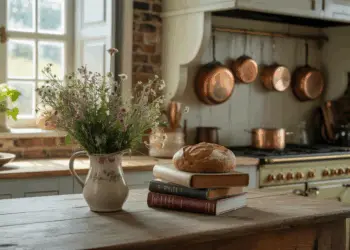Chopping vegetables, putting a dish out of the oven, sitting down to dinner. A whole host of daily activities revolve around the Kitchen countertop. This essential, functional space also brings its touch to your decor. But which one to choose? We don’t leave you in the lurch and we guide you to find the rare pearl.
Table of Contents
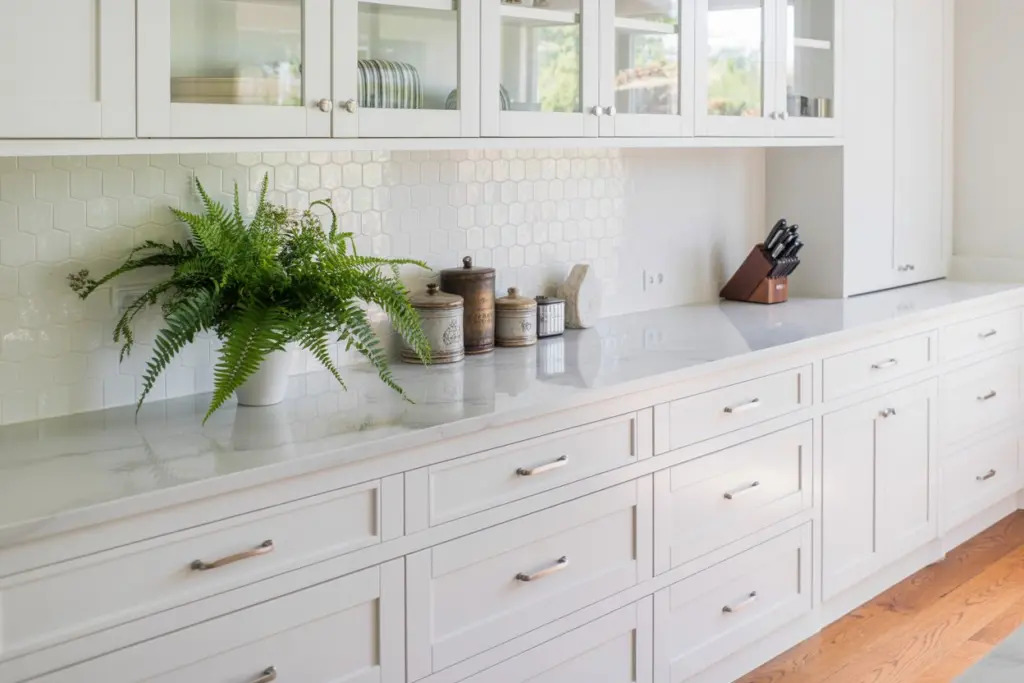
3 key questions to avoid making kitvhen countertop on the comet
The choice of the ideal kitchen countertop depends of course on your tastes, needs, budget, and available space. To help you decide, here are 3 key questions to ask yourself.
Models: what type of kitchen countertop do I need?
The role of the countertop? To provide a practical space for the preparation of dishes. Generally linear and attached to a wall, it can also be placed between two elements (dishwasher and sink, for example); form a corner and thus delimit the kitchen from the living room; or be in the middle of the room as an island.
Choosing the shape of a kitchen countertop
Before choosing to buy your kitchen countertops, it is important to think about the layout of your kitchen. This is determined by :
- The shape of your room (square, rectangular, corridor..)
- The size of your kitchen (large, small)
- The location of your kitchen (closed or open to another room such as the dining room or the living room)
- The location and number of appliances in place or to be installed
- Your cooking habits (need for a lot of space to cook, many small appliances to put down, a space to eat…
- The necessary distances to leave between your furniture (to open the fridge or the oven properly, to move around the table…)
- Your budget
As i have said, by making a diagram of your kitchen, you will have a clearer picture of the situation and will be able to make several tests in order to find the best layout.
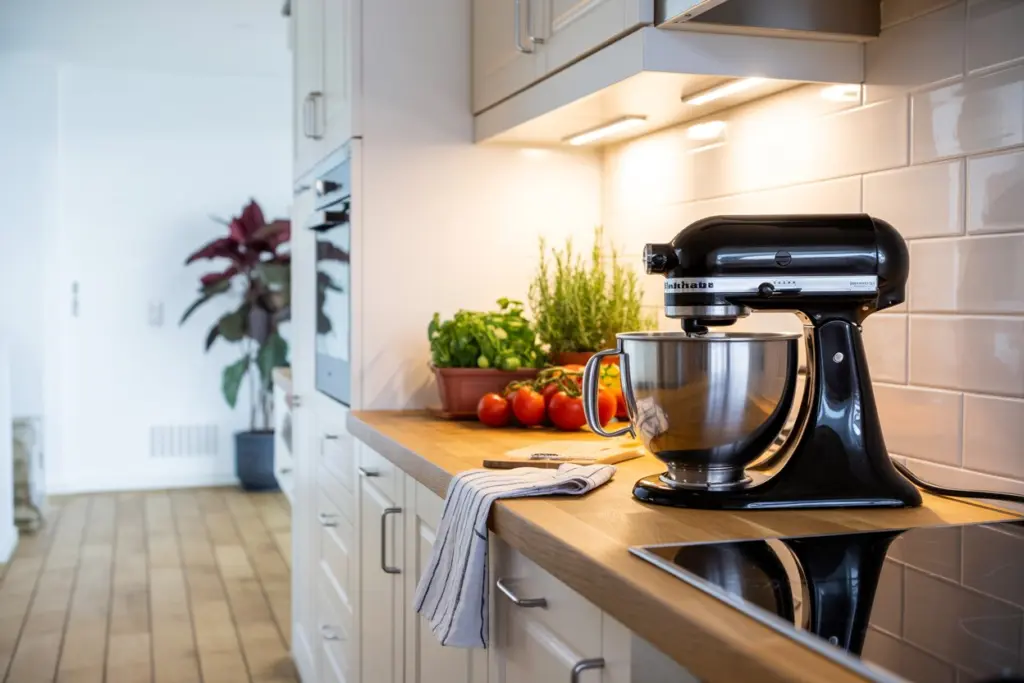
Kitchen countertop shapes adapted to your layout
If each kitchen is unique, there are still basic implementations:
- I-shaped (aligned against one wall) or double I-shaped (against 2 walls facing each other), we will opt for the straight worktop.
- U-shaped (aligned against 3 walls), we can opt for the corner worktop.
- L-shaped (against 2 walls that form a right angle), we will choose a rounded worktop.
- In a herringbone pattern (L or I configuration to which a shorter straight top is added in front)
- With a central island, possibility of making a custom-made worktop.
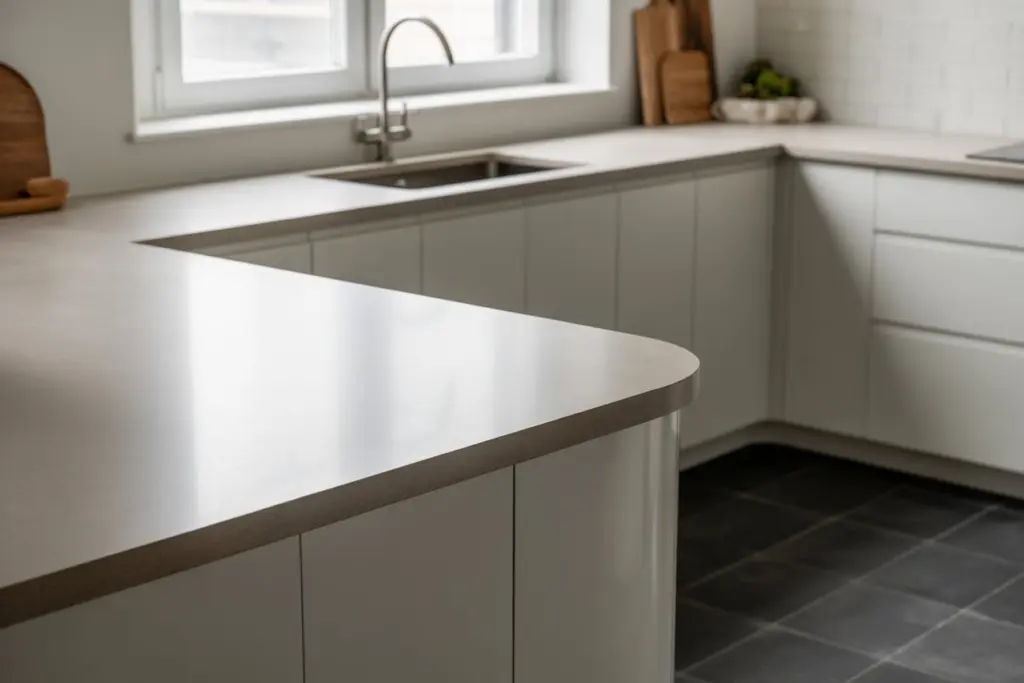
However, certain shapes of worktops will be more suitable such as the straight top for I-shaped kitchens, or to separate the kitchen from the main room by creating a bar or a dining area. A corner worktop can be practical in an L-shaped or U-shaped kitchen to install a sink or a cooktop, as well as a rounded worktop (or whistle) that can be used as a dining area.
Install kitchen countertop: do it yourself, call a pro or customize?
It all depends on your DIY skills. If you’re handy with your hands, you should be able to install a melamine board as a kitchen countertop. Kit kitchens with integrated worktops also offer precise and easy instructions for those who want to get started.
On the other hand, it is better to have your feet on the ground and call in a professional if you have chosen a material that is difficult to work with (granite, quartz, ceramic or glass, for example) or an original shape (a half-moon worktop).
A custom-made worktop is a good option if you have an atypical kitchen and/or very specific and personalized desires. It gives you total freedom of choice in terms of shape, look and size.
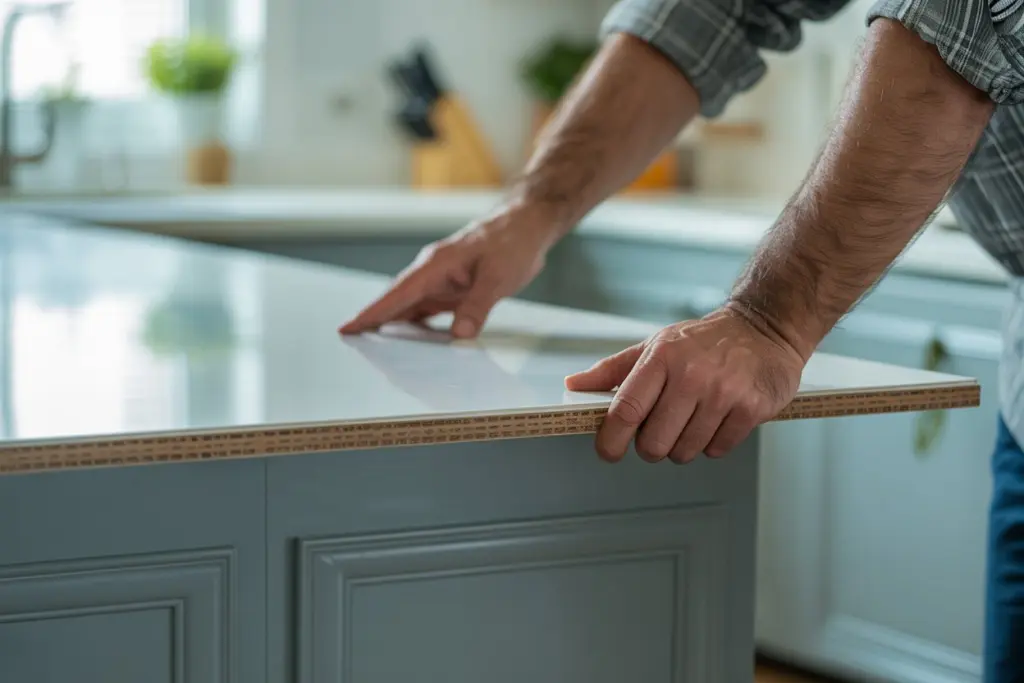
kitchen countertop Dimensions: which ones to take into account?
In order to proceed with the installation of your countertop as it should be, it is better to follow the rules of installation and take into account all the dimensions necessary to ensure the balance and horizontality of the whole.
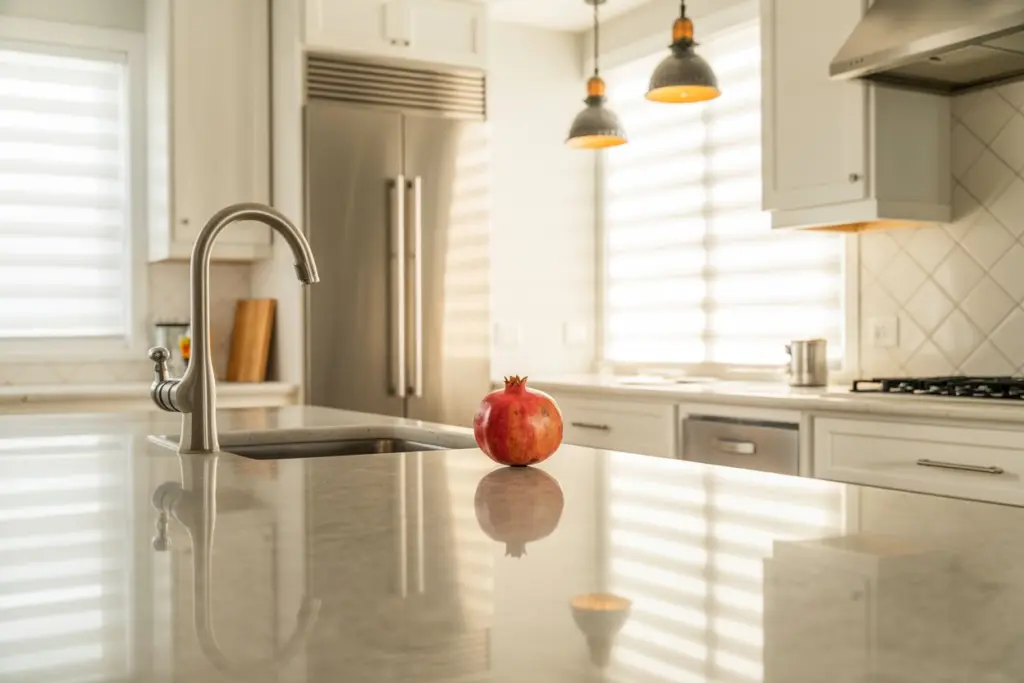
Height:
It is calculated according to your height. If you are tall, you should choose a countertop that is 95 cm high so that you don’t bend over and hurt your back. On the other hand, a worktop that is too high forces you to lift your arms and strain your shoulders unnecessarily. The benchmark for maximum comfort? It should be at waist level. This includes the thickness of the work surface, of course.
Length: the most important parameter
The length of the countertop is the length of the frame that will support the countertop in stone, concrete, stainless steel, ceramic, wood, laminate or other. It is important to take this dimension into account. You will find standard measurements, as you can customize the length that fits your interior design, the structure of your frame and your furniture.
Width
The width or depth of your countertop should be choose according to your desires and the space available. An element located in the center of the kitchen will need more material than a U-shaped or G-shaped corner. Whatever the shape or design you want to adopt, it is important to ensure the right measure to integrate the worktop in its place without any worry.
Thickness: the element not to be neglected
The thickness of a countertop will depend on the type of material. It can be thin as well as thick, ranging from 12 to 70 mm. As we have just seen, it is important to take into account all the dimensions that characterize a worktop. Just be aware that a customized plan is much more expensive than a plan with ready-made standard dimensions. The custom-made plan is a little expensive, but it allows you to save space to integrate storage elements above the plan.
In short, the choice of a worktop, whatever the material it is made of, must correspond to exact measurements to easily integrate into the interior environment. The practical side, maintenance, hygiene, durability, resistance, sturdiness are also important and not to be neglected, to ensure the comfort of the user during his culinary activities.
Which material for your kitchen countertop: a constellation of proposals
Countertops are classified into families of materials with different aesthetic and technological properties. You can choose a worktop for the preparation and washing areas, and another material for the eating area. Any combination is conceivable.
A laminate or melamine countertop for a first kitchen
This composite material is popular because of its value for money. It is made of a superposition of Kraft sheets and a decorative sheet, pressed and impregnated with resin. This laminate is pressed at high pressure with a “sheet” that gives it a surface finish and is then strongly flattened and heated. The combination of pressure and heat gives a sheet that does not exceed 0.9 millimeter very resistant to external aggression. (rubbing, shocks, stains…).
This sheet is then hot glued to a particleboard support of variable thickness and which can be waterproof. The front edges can be of different types, straight edge (most common in ABS or PVC), postformed edge (rounded edge). The laminate worktop is quite resistant even if it does not support very high temperatures and sharp objects. Table mats and cutting boards are therefore essential.
Pros: economical, wide range of designs, easy to cut.
Cons: not very heat resistant, scratches so do not cut directly on the worktop, visible joints likely to clog.
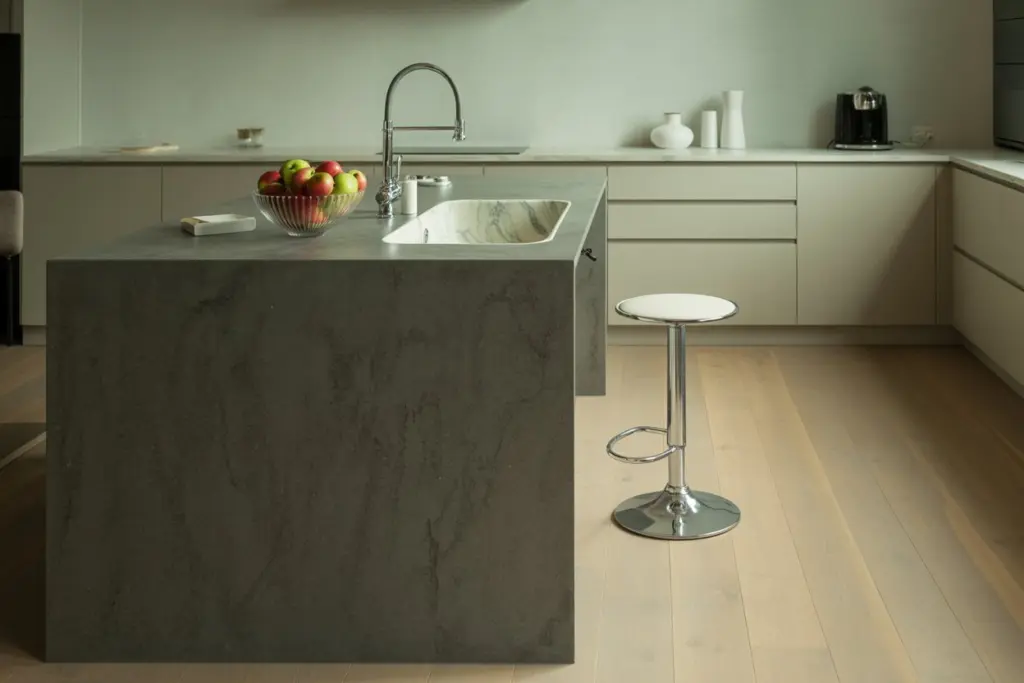
For a professional kitchen, choose metals
Stainless steel countertops, inexpensive and design, give the air of a great chef’s kitchen! Moreover, if professionals are in favor of it, it is because it is particularly hygienic and heat-resistant. You can put a boiling pan or a dish from the oven on it without worrying.
Pros: heat, acid and stain resistant, hygienic.
Cons: scratches, so do not cut directly on the work surface, cold.
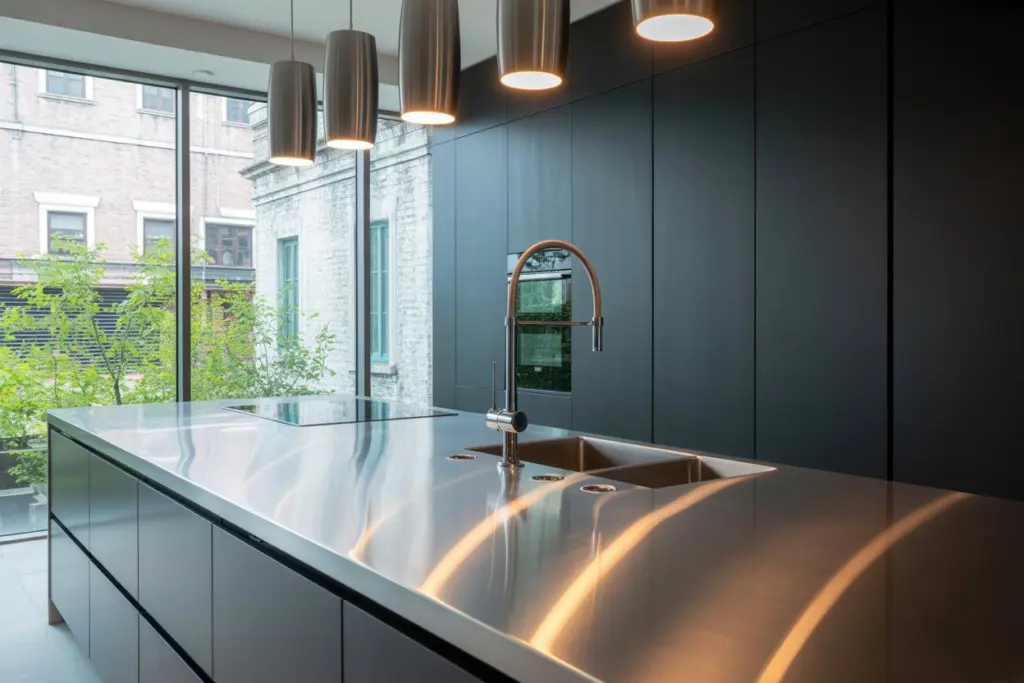
Granite: under the sign of chic and shock
Very hard material, granite is known for its resistance to all tests: shocks, extreme heat, water, scratches … Once polished, it is very easy to maintain. So many properties that make it an ally of choice in the kitchen.
This natural stone offers a wide variety of colors and finishes. Combined with a wooden table, a stone wall or slate furniture, the granite countertop is right in line with the back to nature trend. This material provides a real cachet to your kitchen.
Pros: sturdy, scratch and heat resistant, hygienic, can be worked into the mass, high quality.
Cons: regular treatment against stains, a falling object can cause a chip in the mass, high price.
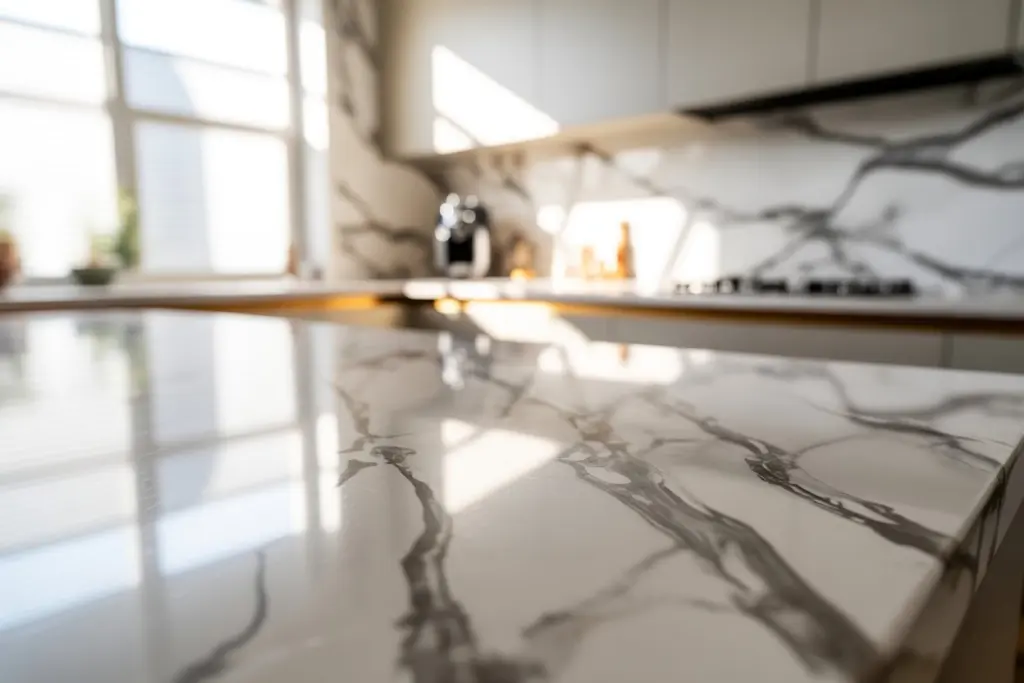
A kitchen enhanced by quartz, which combines the properties of stone and resin
This mixture of quartz and resin offers a wide range of colors and finishes (glossy or satin). As hard as stone, this material has a non-porous surface that is highly resistant to stains (wine, coffee), culinary acids (lemon) and oil. It resists everything: marks, shocks, scratches, extreme temperatures (up to 200°C).
This reconstituted stone is ideal with a stainless steel sink and a wooden table. A mix of materials top trend. But thanks to the variety of colors available in this material, quartz fits in any interior.
Pros: scratch, shock, heat, detergent and stain resistant, wide range of colors.
Cons: medium high price, small joints to be cleaned so that they do not get dirty.
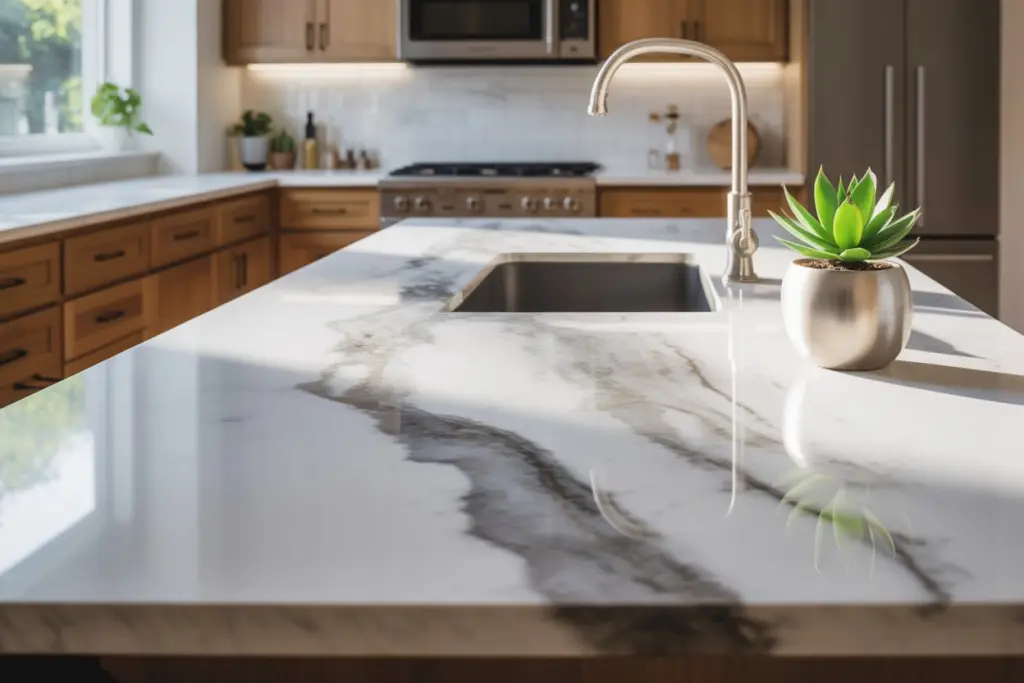
A natural wood countertop in the kitchen, provided it is maintained
Noble material par excellence, wood brings warmth and authenticity to your kitchen. Pine, oak, bamboo… Depending on the species, you are spoiled for choice in terms of color tones, grooves and materials. It has a good resistance to shocks and heat. The only drawback: its maintenance. It must be pampered so that it patinates well over time. To do this, you must apply a coat of linseed oil when you install it and at least every six months.
Solid oak is prized for its natural beauty. And no matter how thick it is, it’s up to the task! A thin wooden countertop gives a refined and elegant look, while a thicker one offers a rustic look to your kitchen.
Pros: shock resistant, high quality solid aspect.
Cons: regular maintenance is required to prevent stains, not heat resistant, moderately resistant to scratches and stains.
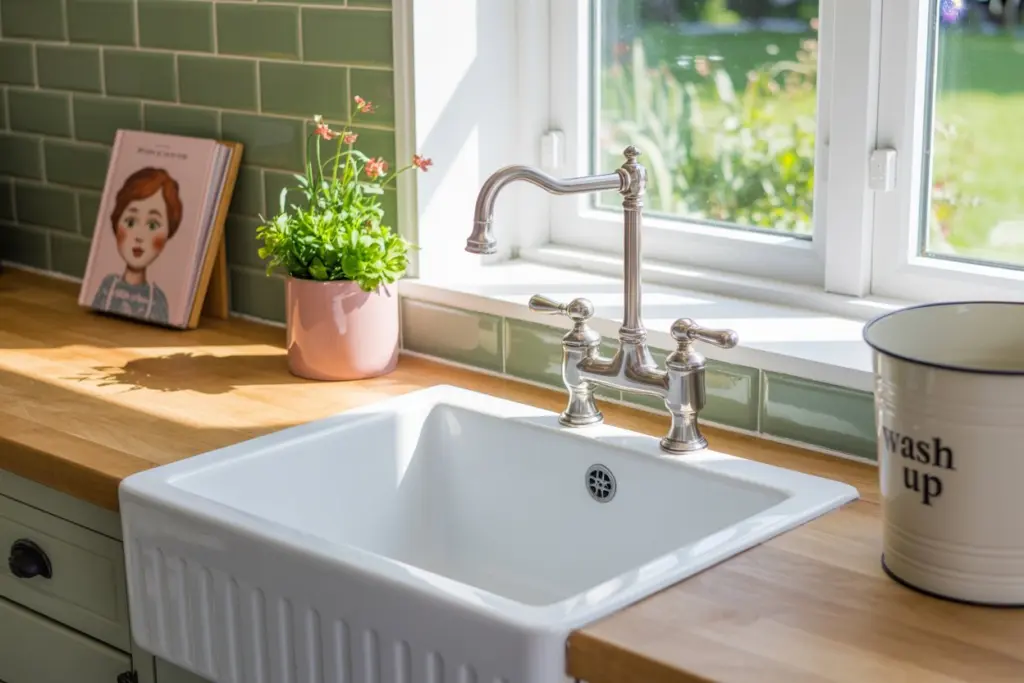
A bucolic kitchen with a ceramic or earthenware countertop
Tiles, by its installation, requires joints, which are sensitive areas to the accumulation of dirt. It is possible to use tiles with rectified edges, which allows to have very fine joints and without relief.
Pros: economical, easy to install, resistant to heat, stains and scratches, wide range of colors.
Cons: regular cleaning of the many joints is essential, old-fashioned appearance.
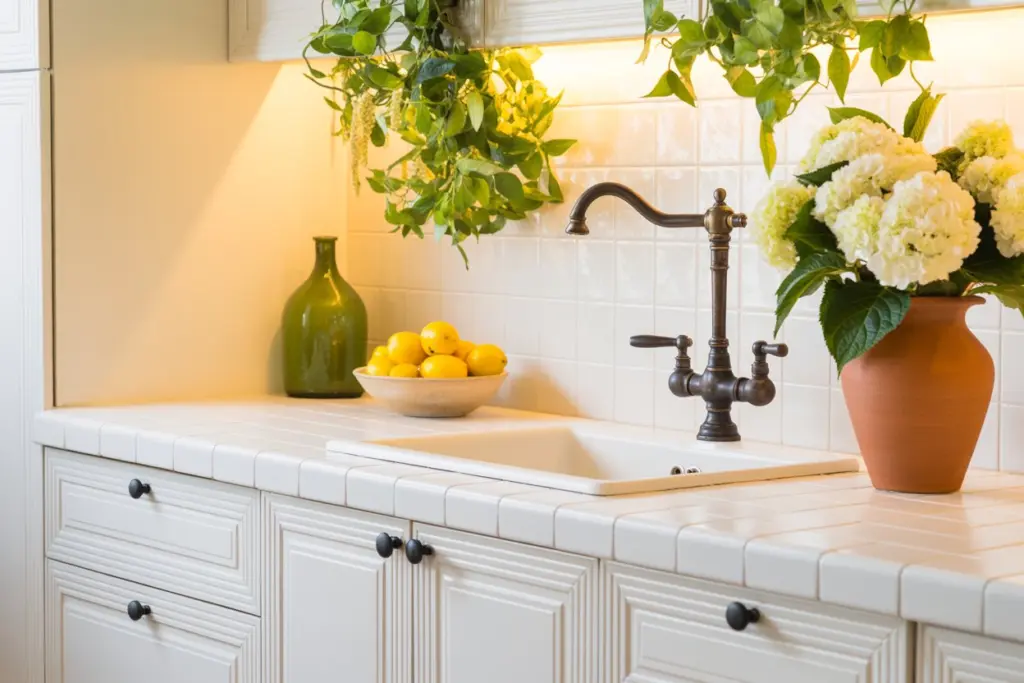
Glass: elegance in all transparency
Originality, design, modernity… The glass worktop is a brilliant idea. Non-porous, hygienic, it is not afraid of stains. But it resists heat up to 120°C only. It is a material that remains fragile. Beware of scratches and sudden shocks.
Transparent or opaque, tempered glass is available in many colors. With its clean lines, it brings elegance, brilliance and brightness to a modern kitchen. Or, you can use it in a pinch and match it with a wooden worktop for a very elegant kitchen.
Pros: high-end appearance, design, its brightness allows to visually enlarge the space, the glass is ideal for a small kitchen.
Cons: fragile against shocks, scratches so do not cut directly on the worktop, maintenance against traces of limestone required.
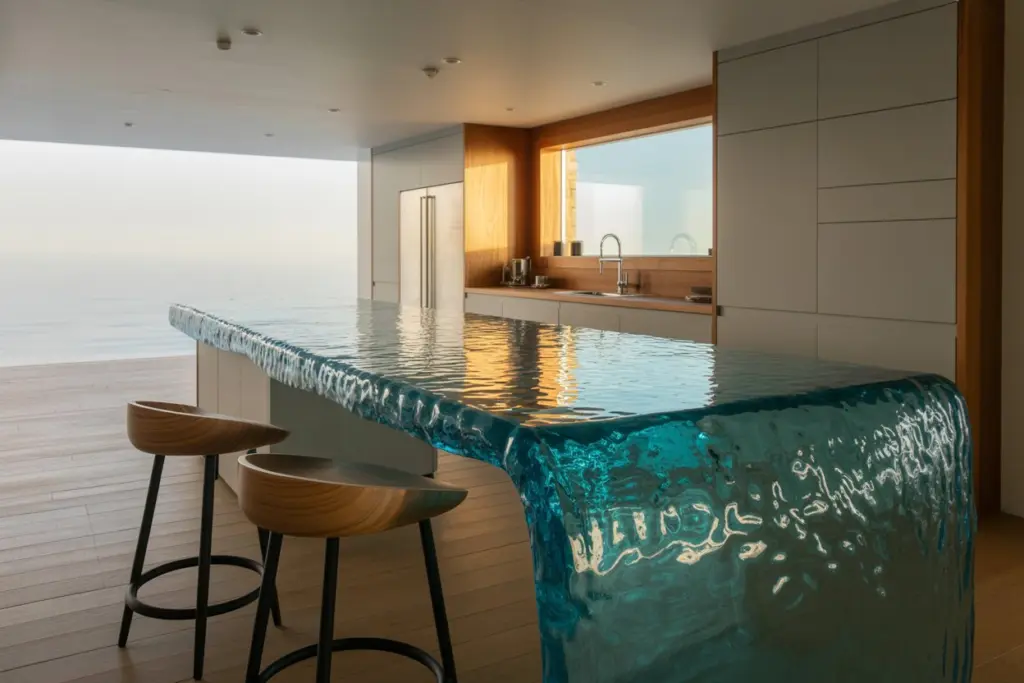
A coated worktop adds character to your kitchen
Resin cement or tadelakt are decorative materials that some people use to make the kitchen warm. However, it is necessary to waterproof them regularly.
Pros: affordable price, cleaning with soap and water.
Cons: does not resist to household products, scratches so do not cut directly on the worktop, re-waterproof it regularly.
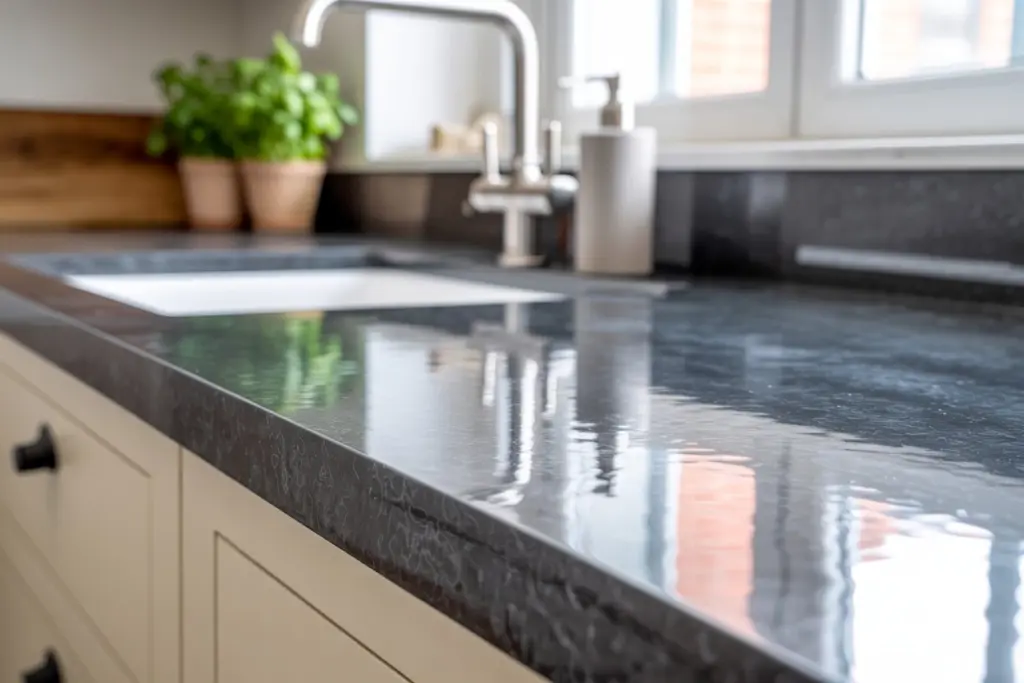
Dekton: 100% mineral
Launched in 2013, it is the new trendy material. It is an alloy of glass, quartz and ceramic particles that fuse together using a high-tech process (TSP lasering or sintering). This composition in mineral materials gives it a foolproof resistance against scratches, stains, abrasion, thermal shocks.
Its style advantage: Dekton is available in a wide variety of colors and finishes. Classic or modern, the material adapts to all kitchen styles. It is not sensitive to UV rays, the colors of your Dekton worktop will not fade over time.
Its strong point: Its resistance to heat, superior to that of ceramic (which already supports up to 900°C). You can put a boiling pot directly on your Dekton worktop as well as cut your vegetables without fear of scratching it (except for ceramic knives).
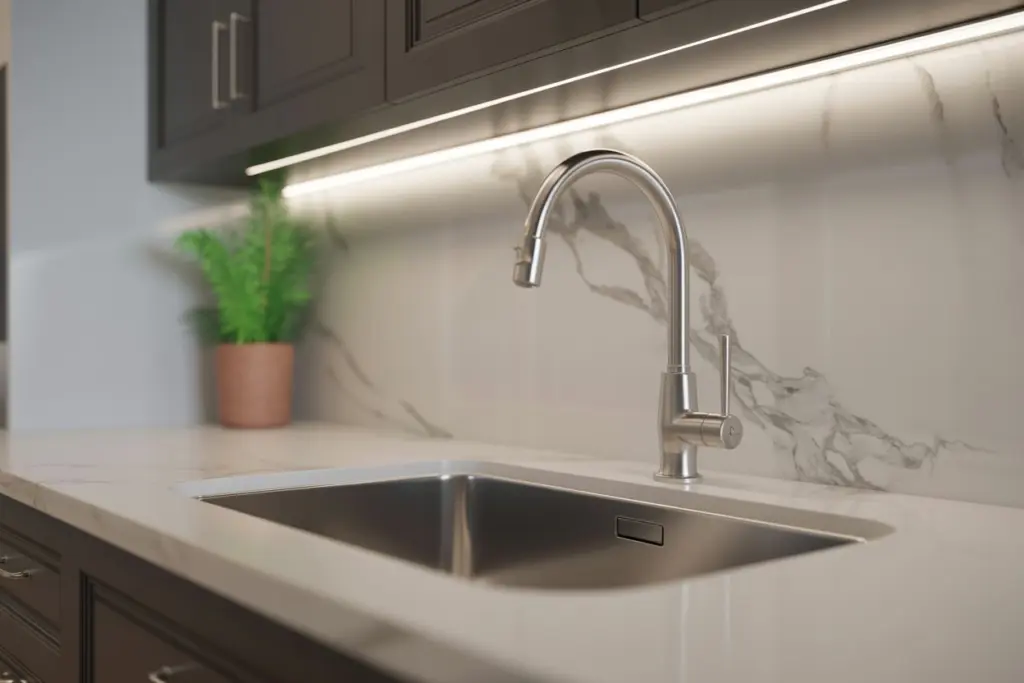
Satellite issues: small details not to be overlooked
Whether it’s on or around the kitchen countertop, there are still small details to be worked out to get the ideal countertop.
Profile: which edge are you?
A countertop with straight edges has by definition right angles. Modern and designer, they go well in contemporary kitchens. But it’s not great for the safety of your children. So prefer round edges, more classic but less dangerous, especially if your worktop is on an island and your children turn around or near a passage.
You can also play on the thickness of the worktop, which is called edge. Thin, the countertop blends into a modern design decor, imposing it gives character to your kitchen. As a finishing touch, you can choose to glue a matching edge strip for a homogeneous look or a different color to make a distinctive statement.
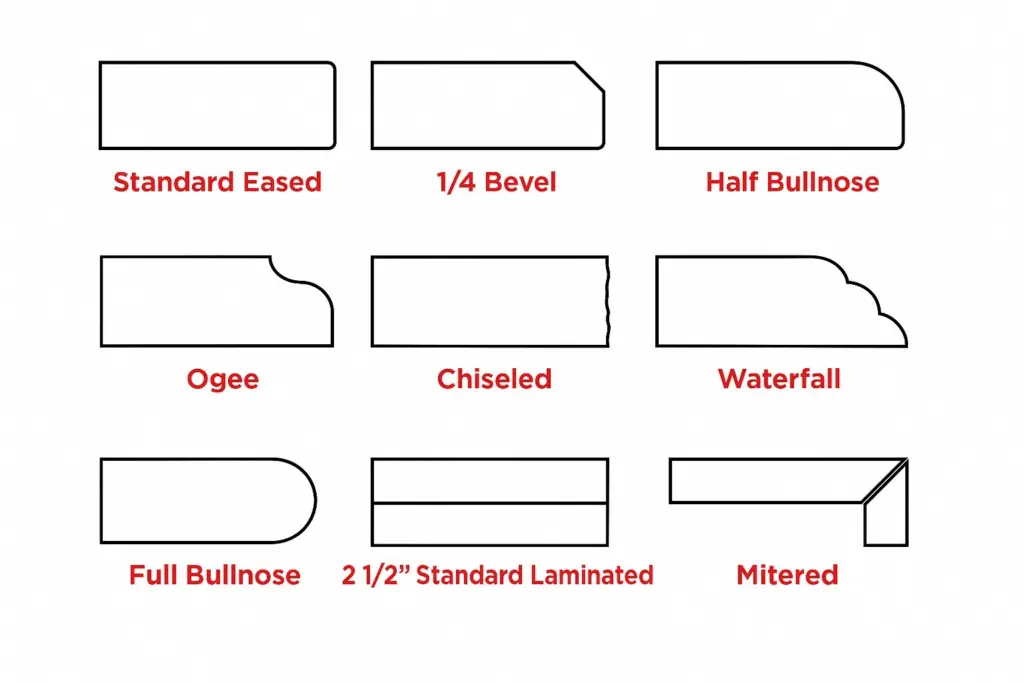
And the light was: what lighting on my kitchen countertop?
In order to see more clearly when preparing your meals, the choice of lighting is a detail not to be taken lightly. The ideal is to mix several sources of lighting: a suspension lamp to light the whole room and bring style to your kitchen, spotlights located on your work area.
Underneath tall furniture you can install spotlights or lighting strips. The spotlights allow a partial or total diffusion of light. Choose them carefully because poor quality spotlights create circular halos that create shadowy areas. It is therefore necessary to check that there is a global diffusion.
For the strips, it is important to choose them with an opaque diffusion profile so that the light diffuses well without distinguishing the luminescent points.
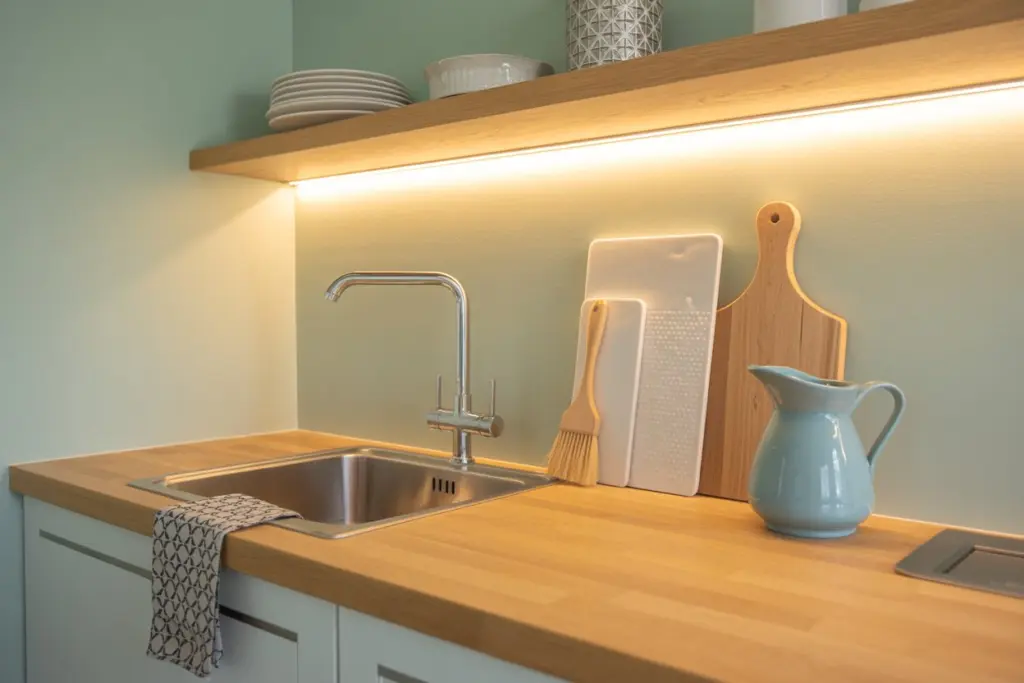
What decor for my credenza?
When you say kitchen countertop, you also say credenza. You can either play with contrasts and choose different materials and colors for a kitchen with character. Or you can harmonize for more discretion and elegance. Glass credenzas are very easy to clean and are available in trendy colors and patterns. They have the advantage of bringing color, light and style to a kitchen.
No more preconceived ideas! Food spills on a glass credenza are much less visible than on other types of materials such as stainless steel. Many combinations are possible. Let your desires speak for themselves!
